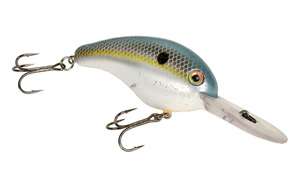
Fluorocarbon is making a big difference in my crankbait fishing. I've won two Elite Series tournaments this season using crankbaits (Strike King Series 5 and 6 lures), and both times fluorocarbon line has been a factor.
I use Bass Pro Shops XPS fluorocarbon line for most of my crankbait fishing these days for several reasons. First of all, it's denser than water, so it sinks. This allows my crankbaits to get a little deeper than they would with monofilament. If I could get a bait to 15 feet with 10-pound-test monofilament line, I can get the same bait just as deep with 14-pound-test fluorocarbon. And if I scale back to 10-pound fluorocarbon, I can get the same bait down two or three feet deeper.
A second reason I like fluorocarbon for my crankbaiting is the feel it gives me. Because it sinks, it gives me a better, straighter connection to my bait. And because it has less stretch than monofilament, I have a better feel for what my bait is doing.
That improved feel isn't just important when you're working a lure through cover. It's also good when the bite is really subtle. If you're using fluorocarbon, you have a better chance of detecting those strikes and catching more bass.
Those are common reasons for preferring fluorocarbon, but there are others.
Fluorocarbon is also very abrasion resistant — more so than monofilament.
I also think my crankbaits deflect off rocks and stumps and other cover better when I'm using fluorocarbon. This leads to more strikes.
Finally, I lose fewer crankbaits with fluorocarbon. Part of that is because of the better feel fluorocarbon gives me, but another part is that I can better get the lure loose by "bowstringing."
If you haven't tried bowstringing, it's easy. Just tighten up on a snagged crankbait, pull your rod back so that it arcs like a bow and grab the line where it comes off the rod tip. Give it a good pull to put more tension on the line, and then let it go quickly. The sudden slack in the line will usually free the crankbait.





